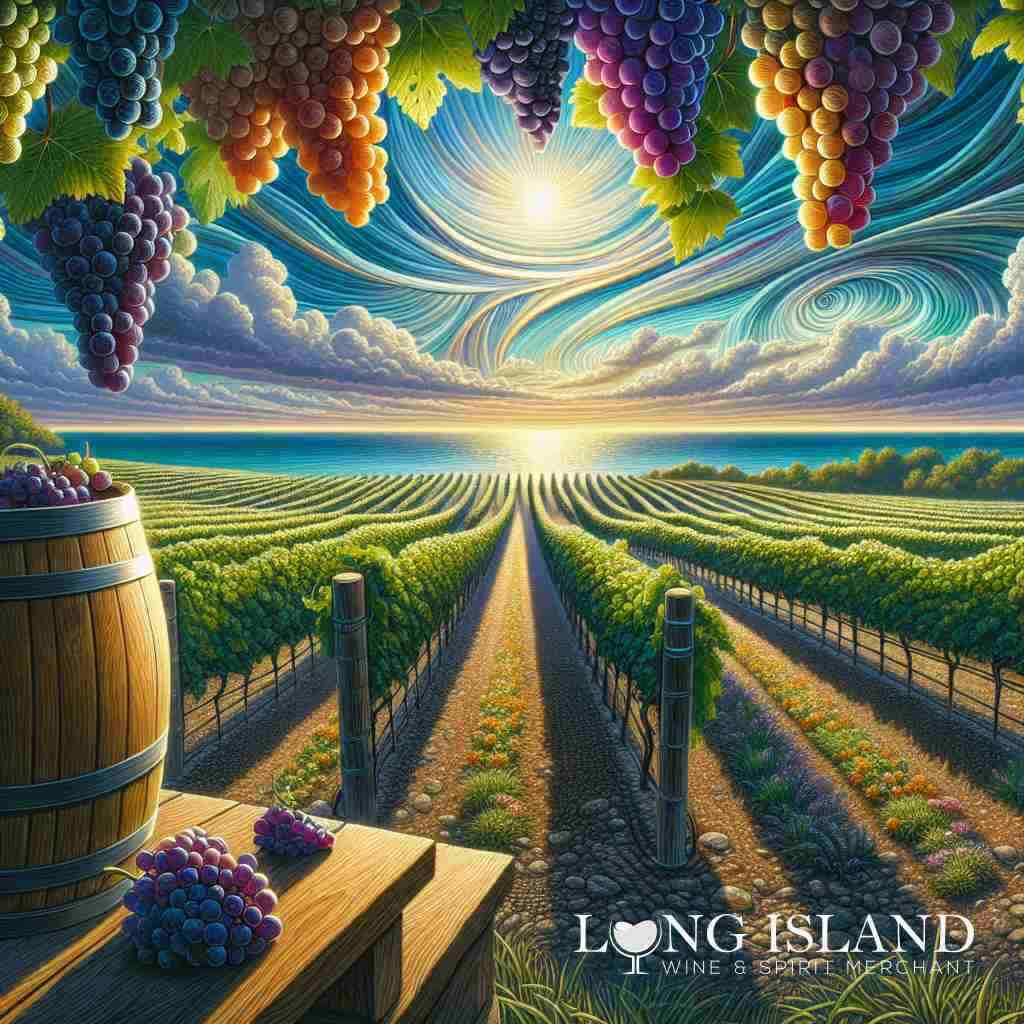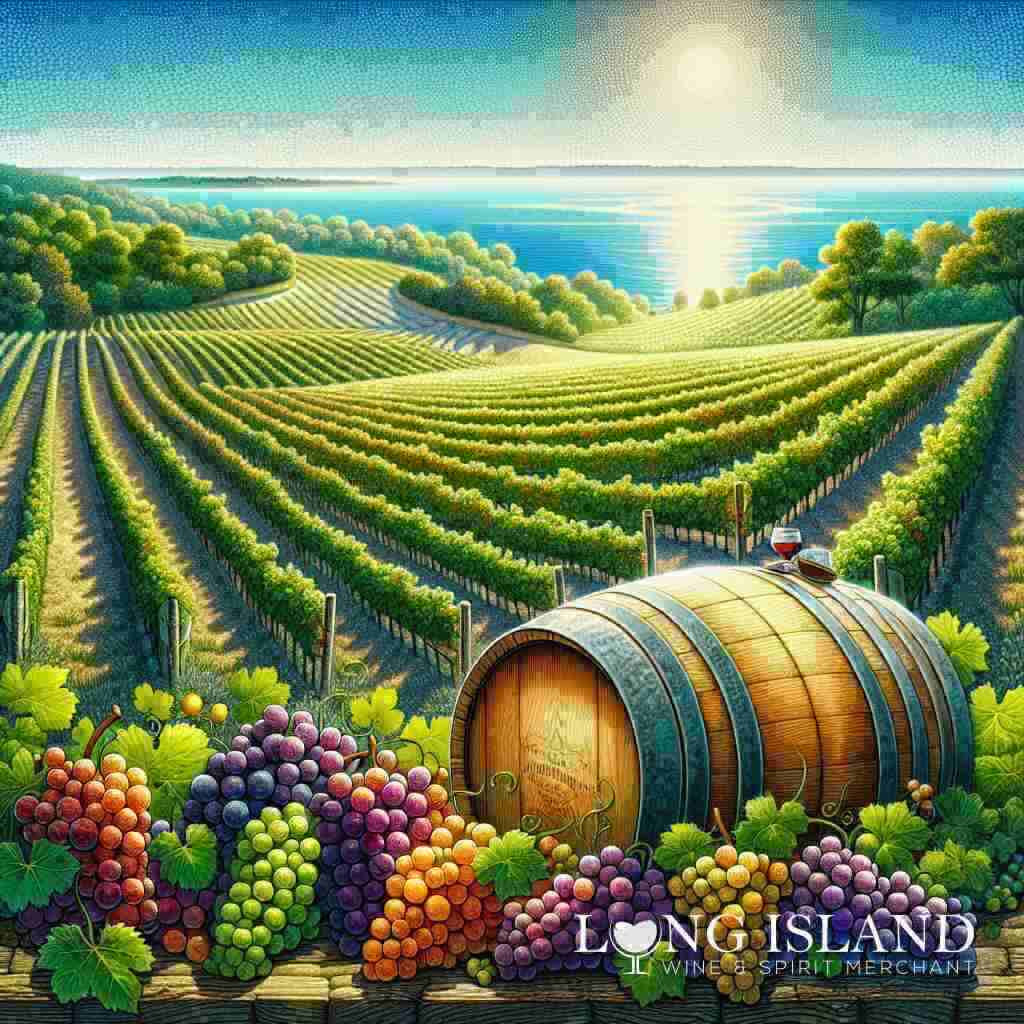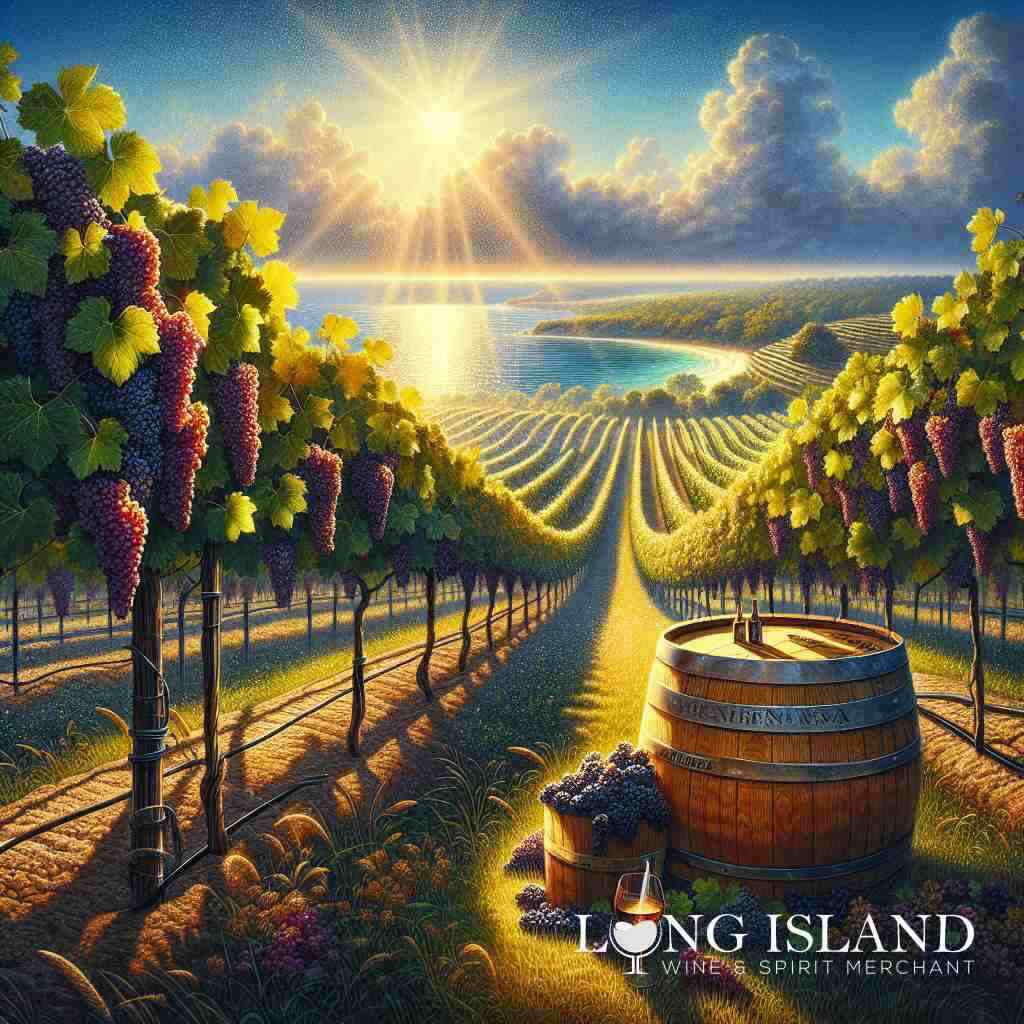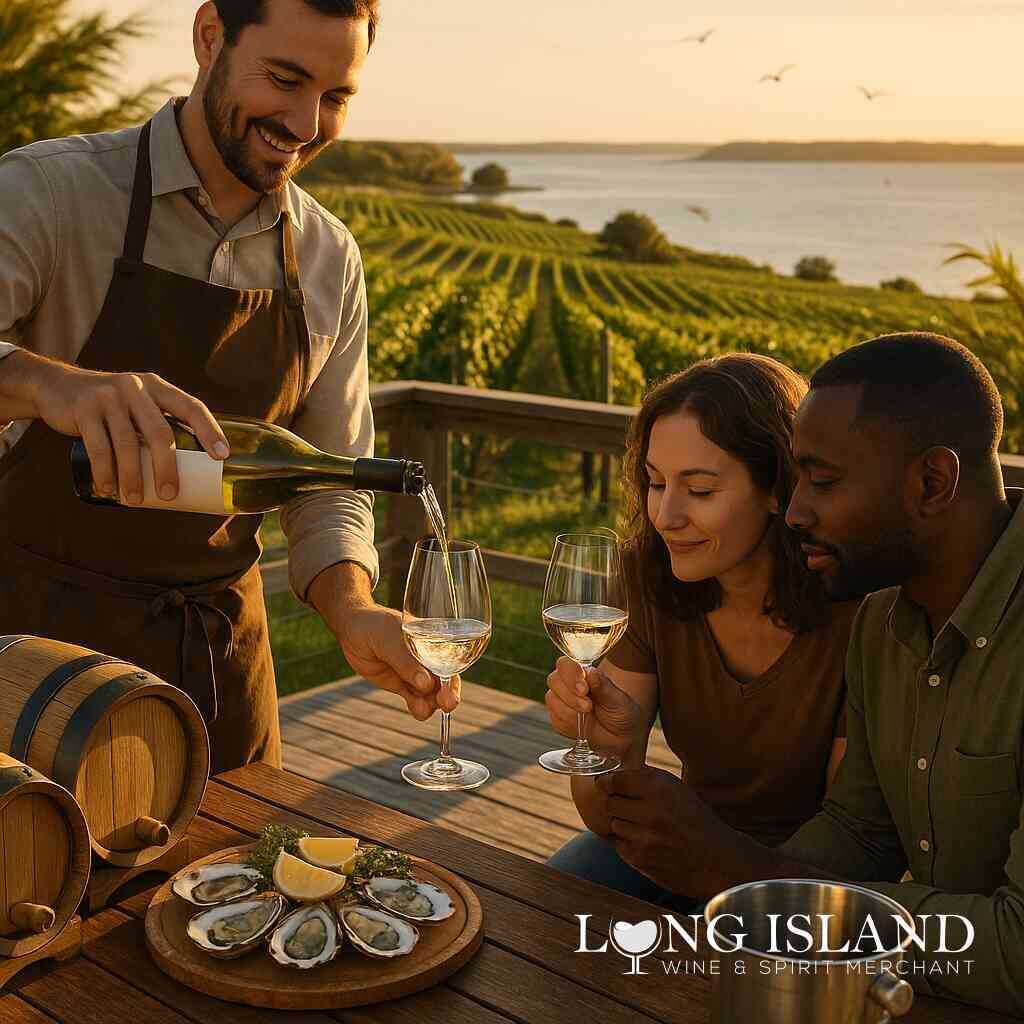
The Science Behind Wine Flavor Profiles on Long Island
May 28, 2025
Embarking on the Wine Odyssey
Unveiling the Mystique of Long Island Wines
Long Island’s wine culture is an unfolding tapestry of flavors and aromas, gradually gaining recognition on the global stage. Enriched by a unique blend of climatic conditions and geographical features, the region’s vintages embody distinct wine flavor nuances. The diverse influences shaping this wine-producing area contribute to a veritable cornucopia of tasting experiences. Not merely constrained to the palate, these experiences are also an olfactory delight. Every sip of Long Island wine carries with it an echo of the earth, climate, and human artistry that brought it to life.
Long Island’s wine industry is relatively young, yet it has already carved a niche in the viticultural world. The region’s geography parallels that of some of Europe’s classic wine territories, lending itself to a promising spectrum of varietals. Moreover, Long Island’s winemakers are committed to blending traditional practices with innovative techniques. As such, they produce wines that rival some of the best offerings in the global market.
Introduction to the Wine Flavor Profiles
Understanding wine flavor profiles is akin to deciphering a sophisticated language of taste and aroma. Wine enthusiasts embark on a journey of discovery, identifying specific notes and textures that define a wine’s character. On Long Island, the wine flavor profiles present a complex interweaving of fruity, earthy, and mineral notes. This diversity results from a combination of the local terroir and the meticulous craftsmanship involved in winemaking.
Each wine varietal tells its own story, reflecting the soil, climate, and innovative practices of the region. In this exploration, wine flavor profiles serve not only as a sensory guide but also as a cultural narrative of Long Island’s viticultural evolution. Enthusiasts and novices alike gain a deeper appreciation of the multifaceted dimensions offered by Long Island’s wines through intentional tasting and learning.
Setting the Stage: Long Island’s Unique Climate and Terroir
Long Island’s position between the Atlantic Ocean and Long Island Sound creates a sui generis microclimate ideal for viticulture. The region’s maritime climate tempers the extremes of hot summers and frigid winters, ensuring that grape varietals reach perfect ripeness. This Long Island climate impact on viticulture produces wines with balance, structure, and depth.
The soil composition further contributes to cultivating high-quality grapes, offering a unique minerality that complements the fruit characteristics. Winemakers capitalize on this natural bounty by incorporating sustainable farming practices alongside modern vinification techniques. The terroir influence on Long Island shapes not only the identity of its wines but also dictates the distinctive expressions they carry. This delicate interplay of natural conditions and winemaking mastery is what continues to propel Long Island wines to new heights.
Decoding the Wine Flavor Language
Essence of Terroir: How Long Island’s Landscape Shapes Wine Flavor
Long Island’s unique terroir fundamentally influences the wine flavor profiles produced in the region. The specific climatic factors, such as the maritime climate, play a crucial role in nurturing grape varietals that bring forth distinct tastes. Soil composition, including sand and silt, adds a particular minerality to the wines, elevating the terroir influence on Long Island. This natural symphony creates a unique ecosystem where the harmonization of elements results in wines that reflect the region’s essence. Long Island winemakers capitalize on these features to craft expressions that are both sophisticated and authentic.
The careful selection of grape varietals that thrive in Long Island’s terrain is also a key element of its winemaking success. Factors such as temperature, rainfall, and sun exposure are meticulously monitored to ensure that every bottle tells the story of its origin. Ultimately, the spirit of Long Island wines lies in the dialogue between nature and human artistry, a narrative richly interpreted through the terroir.
The Sensory Symphony: Wine Aroma Compounds and Their Role
Wine aroma compounds play a fundamental role in crafting the sensory experience of wine tasting on Long Island. These compounds, created through intricate chemical reactions during fermentation and aging, define the bouquet that wine enthusiasts seek. Each grape varietal contributes its unique set of aromas, from floral notes to earthy undertones, resulting in a symphony of scents that tantalize the senses. The wine aromas and flavors are expressions of the intricate dance of nature’s chemistry and winemaking expertise.
The perception of wine aroma is further influenced by factors like temperature and glass shape, which can emphasize or mask specific notes. The art of wine tasting involves not only recognizing these aromas but understanding their symbiotic relationship with taste and texture. Each aroma compound carries the potential to transform a wine’s character, providing depth and enhancing complexity, making the role of these compounds pivotal in the appreciation and enjoyment of wine.
Balancing Act: Wine Acidity Levels and Taste Perception
Acidity in wine acts as a balancing agent, shaping the perception of flavor by complementing sweetness and enhancing freshness. Long Island’s cool climate promotes the development of natural acidity in grapes, an essential component for creating well-rounded wines. The delicate balance of acidity and taste perception is a testament to the region’s winemaking finesse, delivering crisp and vibrant wines.
Understanding acidity’s role requires a nuanced approach, as it impacts both the texture and longevity of wines. Tasters often describe high-acid wines as lively and zesty, while lower acidity results in softer, rounder profiles. Achieving the perfect acidity level is paramount for winemakers, relying on both intuition and scientific understanding. Through intentional blending and precise harvest timings, Long Island vintners craft wines that not only satisfy the palate but also age gracefully, ensuring each sip is a testament to their meticulous care.

Viticulture Science: The Creative Process
From Vineyard to Glass: Understanding Grape Varietals on Long Island
Long Island’s viticultural landscape is a testament to the region’s unique grape varietals and meticulous artistry in winemaking. The surrounding maritime climate and diverse soils provide an ideal setting for cultivating varieties that are distinctively rich and complex. The grape varieties unique to Long Island are a product of both heritage vines and innovative agronomy. Winemakers on Long Island carefully select varieties that can flourish in this environment, showcasing the perfect balance of acidity, sweetness, and tannin. This selection is mirrored in each bottle, transporting the drinker to the vineyards with every pour.
Understanding these varieties involves appreciating the intricate dance between climate, soil, and human cultivation practices. Varieties such as Merlot, Chardonnay, and Cabernet Franc thrive here, each offering unique profiles that reflect their terroir. This varietal breadth allows for a diverse wine portfolio, enticing enthusiasts and novices alike to explore and appreciate the nuances Long Island wines embody.
The Alchemy of Wine Fermentation: Transforming Grapes into Liquid Art
In the world of winemaking, fermentation is nothing short of magic-transforming simple grape juice into an elixir of complexity and richness. Long Island’s winemakers employ time-honored techniques intertwined with modern innovations in the fermentation process in winemaking. This alchemical transformation relies on the careful balancing of microscopic reactions, where yeast converts sugars into alcohol, releasing carbon dioxide and developing the wine’s flavor.
The subtleties of the fermentation process can significantly influence the final product’s character and personality. Factors such as temperature control, yeast selection, and fermentation duration are meticulously managed to craft wines with elegance and depth. Whether it’s the creation of a brisk, fruity white or a deep, velvety red, the artistry of fermentation continues to captivate as it transforms raw grapes into an unforgettable sensory experience.
Aging Gracefully: Impacts of Wine Maturation on Flavor Profiles
Wine maturation is a transformative journey where time enhances complexity, developing deeper flavors and richer aromas. Long Island winemakers are skilled at mastering the maturation effects on wine to curate sophisticated expressions that enchant the palate. The process involves aging in various mediums, such as oak barrels or stainless steel tanks, each imparting distinct characteristics to the wine.
As wine matures, it undergoes chemical transformations that soften tannins, deepen color, and develop intricate aromas. These changes contribute to the wine’s body and texture, offering a nuanced tasting experience that evolves with each sip. The meticulous aging process ensures that wines from Long Island not only capture but also preserve their signature styles, a testament to the region’s commitment to quality and tradition. With each vintage, Long Island artisans knit their expertise and natural bounty into elegant bottles of wine, ensuring a timeless legacy on every wine rack.
Wine Flavor Chemistry: Unlocking the Secrets
Aromatic Wine Compounds: The Molecular Dance
In the world of wine, aromatic compounds play a pivotal role in defining a wine’s unique flavor profile. These compounds result from complex biochemical reactions during fermentation and aging. On Long Island, the art of cultivating these aromas has been meticulously refined, leading to wines brimming with sensory intrigue. From the delicate floral notes of a Chardonnay to the intense berry aromas of a Merlot, these compounds perform a dance at the molecular level, crafting a symphony of fragrance.
Winemakers on Long Island understand the importance of these aromatic compounds and strive to enhance them through sustainable viticulture practices. The interplay between yeast, grape skin, and fermentation conditions can heighten or suppress specific aromas, giving each vintage its distinct essence. This mastery of aromatic wine compounds enables Long Island’s vintners to create wines that captivate the senses and evoke the region’s terroir.
Tannin Science and Wine Body: Texture and Beyond
Tannins are essential elements that contribute significantly to a wine’s structure and mouthfeel. Comprised of complex polyphenolic compounds, tannins impart texture, often described as the wine’s backbone. Long Island wines are celebrated for their balanced tannin profiles, achieved by venturing into tannin and wine texture, where winemakers harness these compounds to craft wines with depth and richness.
The careful management of tannins affects not only the tactile experience of wine but also its aging potential. Wines with well-integrated tannins develop gracefully over time, unveiling layers of complexity. Long Island winemakers employ precise techniques in grape selection, maceration, and barrel aging to achieve the desired tannin profile, resulting in wines with robust character and longevity. This intricate understanding of tannin science allows for an elevated sensory experience, inviting enthusiasts to appreciate the full spectrum of textures and flavors.
Phenolic Compounds and the Art of Sensory Evaluation
Phenolic compounds in wine contribute profoundly to its hue, taste, and nutritional value. These compounds, including tannins, flavonoids, and non-flavonoids, are crucial for understanding a wine’s sensory attributes. On Long Island, wine artisans embrace the arts, using these compounds as both a tool and a challenge in crafting exquisite varietals. The coloration and antioxidant properties of phenolic compounds add allure and complexity to each bottle, influencing perceptions of quality and rarity.
A thoughtful sensory evaluation and analysis of these wines reveals how phenolic compounds shape flavor intensity and balance. Each tasting session is an opportunity to decipher the nuances phenolics introduce, from the bitterness of young reds to the astringency mellowed by age. Long Island’s commitment to exploring the dynamic interplay of these compounds underlines its reputation for producing wines that are not only delightful to the palate but also provoke intrigue and contemplation among connoisseurs.
The Art of Wine Tasting: Techniques and Science
The Wine Flavor Wheel: A Guide to Sensory Wine Analysis
The wine flavor wheel is an essential tool for novices and connoisseurs alike. It offers a visual representation of the vast array of flavors one might encounter during a tasting. This wheel aids in categorizing and identifying the sensory components of wine, from primary fruit notes to more subtle oak and spice undertones. By using the flavor wheel, wine enthusiasts can enhance their sensory wine analysis, refining their ability to discern complexity in each sip.
Long Island wines, with their distinct profiles, lend themselves well to this type of analysis. The intricate interplay of flavors reflects the region’s unique terroir, and the flavor wheel helps in parsing out these elements with precision. Through methodical use of this tool, tasters can deepen their appreciation and understanding of wine, uncovering layers of flavor and aroma that tell the story of the vintage.
Role of Taste Buds and the Complexity of Wine Taste Perception
An intricate dance occurs between taste buds and wine, where perception varies from person to person. Taste buds interact with wine in a way that depends on a myriad of factors, including the composition of the wine and the physiology of the taster. Understanding the taste buds interaction with wine is crucial for those looking to elevate their tasting prowess.
The complexity of wine taste perception is shaped by the wine’s acidity, tannins, sweetness, and aromatic compounds. Each of these elements interacts dynamically to produce the intricate profiles that wine lovers cherish. Long Island’s wines, known for their nuanced balance and structure, provide an ideal playground for exploring these interactions. By engaging fully with the breadth of sensory experiences available, tasters can unlock deeper insights into the art of winemaking and tasting.
Expert Insights: Navigating the Nuances of Wine Tasting
Navigating the intricate landscape of wine tasting requires expert guidance and knowledge. Seasoned experts in the industry reveal that the key to appreciating wine’s complexities lies in a mindful approach to tasting. The art of wine tasting involves more than just identifying flavors; it’s about understanding the context and craftsmanship behind each bottle.
By delving into the wine taste perception insights, enthusiasts can develop a more sophisticated palate. Experts recommend focusing on the synergy between taste, aroma, and texture-key aspects that define wine’s identity. Long Island, with its diverse wine offerings, serves as a rich resource for tasting exercises and educational exploration. Whether through formal tastings or casual enjoyment, the journey into the world of wine promises both education and delight, broadening one’s appreciation for the intricate science behind every pour.

Conclusion: A Toast to the Endless Exploration
Reflecting on Long Island’s Contributions to Wine Science
Long Island’s burgeoning wine culture continues to captivate enthusiasts, offering a window into the intricate fusion of science and art. This region has positioned itself as a distinctive player in the global wine arena, attributable to its unique terroir and innovative viticultural techniques. The wines from Long Island excel in exhibiting the profound impact of vineyard soil and wine quality on the final product. Dive into What Defines Vintage Wine Selections at LI Merchant? Such quality is the result of the dedication and expertise of local artisans who painstakingly oversee each step from vineyard to bottle. Their commitment is evident in the exceptional wines produced, setting a benchmark for wine science and craftsmanship alike. As experts in the field, we appreciate the way Long Island reinforces our understanding of the delicate interplay between geography, climate, and human ingenuity.
Inviting Further Exploration and Taste Exploration
The journey through Long Island’s wineries is not merely about tasting wine but rather about engaging in a sensory dialogue with the region itself. Enthusiasts are encouraged to delve deeper into the wine tasting insights, continuously exploring the diverse offerings that this vibrant region showcases. As you lift your glass to savor intricate flavors, remember that Long Island Wine & Spirit Merchant is your guide. From delightful discoveries in wine chemistry to embarking on individual taste exploration, the potential to learn and appreciate never ends. Whether curating a custom case or partaking in guided tastings, the horizon is wide open for those eager to understand-and taste-the myriad nuances of Long Island wines. Here’s to embarking on your next wine adventure, one that promises endless discovery and delight.
Frequently Asked Questions
Question: What are the key wine flavor profiles I should explore when visiting Long Island Wine & Spirit Merchant?
Answer: At Long Island Wine & Spirit Merchant, we proudly highlight the unique wine flavor profiles distinctive to Long Island. The region offers a rich tapestry of wine flavors, from fruity and floral notes to earthy and mineral undertones. Our selection includes Long Island artisan varieties such as Merlot, which typically features deep berry flavors, and Chardonnay, known for its elegant, floral bouquet. By engaging in sensory wine analysis using the wine flavor wheel, you can fully appreciate the nuanced contributions of our local terroir to these exquisite wines. Learn more about Understanding Long Island Wine Aesthetics with Advanced Insights. Our knowledgeable staff is here to guide you through your wine tasting journey, ensuring that each sip captures the true essence of Long Island’s viticultural excellence.
Question: How does Long Island’s climate impact the wine acidity levels in the bottles available at your store?
Answer: Long Island’s climate plays a significant role in shaping the wine acidity levels found in our bottles at Long Island Wine & Spirit Merchant. The maritime climate of Long Island helps maintain a natural acidity in the grapes, essential for producing wines that are both vibrant and crisp. This balance of acidity ensures a refreshing taste perception, enhancing the overall flavor profile. Whether you’re selecting a dry white wine or a sweet red wine, you’ll notice this characteristic freshness that makes our selection stand out. Our wines’ consistent quality, influenced by the Long Island climate, makes us a trusted choice for those seeking to explore elegant and structured wines.
Question: In the context of The Science Behind Wine Flavor Profiles on Long Island, how does Long Island Wine & Spirit Merchant ensure the best wine selection for enthusiasts?
Answer: At Long Island Wine & Spirit Merchant, we recognize the importance of offering a curated selection that embodies The Science Behind Wine Flavor Profiles on Long Island. Our focus is on wines that highlight the region’s terroir influence and showcase expert craftsmanship in winemaking. Check out How to Craft Seasonal Wine Gems with LI Experts. By collaborating closely with local vineyards and understanding the intricacies of viticulture science, we provide a diverse range of wine choices, from smooth tannins to full-bodied textures. With our wine taste quiz, we tailor recommendations to your preferences, ensuring you enjoy a personalized and enriching wine experience. Our commitment to quality and variety is evident in every bottle we offer, making us the premier choice for wine enthusiasts.
Question: How does Long Island Wine & Spirit Merchant incorporate modern fermentation processes to enhance wine flavors?
Answer: At Long Island Wine & Spirit Merchant, we stay at the forefront of winemaking by embracing modern fermentation processes that amplify wine flavors. By understanding the fermentation process and its impact on wine aroma compounds, we partner with local vineyards that use innovative techniques to produce wines with distinct character and complexity. These methods ensure the development of rich aromatic compounds, enhancing the depth and sensory experience of each wine. Whether it’s a velvety port wine or a crisp rosé, our carefully selected offerings allow you to savor wines at their best, underscoring our commitment to quality and excellence.
Question: Can you explain the role of phenolic compounds in the wines available at Long Island Wine & Spirit Merchant?
Answer: Phenolic compounds are vital to the wines we feature at Long Island Wine & Spirit Merchant, contributing significantly to the wine’s color, flavor intensity, and antioxidant properties. These compounds, including tannins and flavonoids, influence the sensory evaluation of wine, offering textures and flavors that enhance drinking pleasure. Look into Unlocking the Secrets of Long Island Wine Tasting Trends. Long Island wines, known for their rich phenolic profiles, provide a compelling tasting experience, with the interplay of bitterness and astringency adding depth to each sip. Our dedication to showcasing wines with well-managed phenolic content ensures that each bottle delivers on both quality and complexity, making your wine exploration both satisfying and inspiring.



